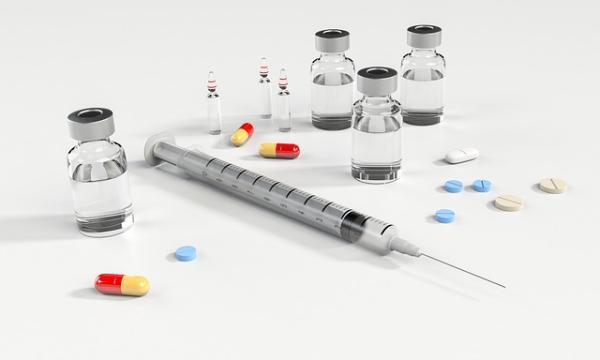Philadelphia, the city with one of the highest incidences of drug overdoses, announced yesterday support for “comprehensive user engagement sites”– a facility where drug-addicted individuals can use their drugs under the nominal supervision of nurses. Referrals can be made for addiction services.
While the media outlets have all widely broadcast their decision, a closer look indicates that Philadelphia has “yet to announce a framework for overseeing the program, potential locations, or a timeline for when sites could open.” I found no information on funding at all, so the announcement is perhaps at best a trial balloon and signal of intent. City officials are clear that this is just part rather than a complete solution; it is a harm-reduction strategy. Philadelphia’s decision is based on a study and modeling of Insite, Vancouver’s program which has been in operation since 2003.
Insite was established at an earlier time in the war on drugs when needle exchange programs to reduce the transmission of disease were established. It offered additional referrals for addiction services and is a harm reduction strategy.
The analysis [1] provided to Philidelphia’s officials makes a number of findings and projections.
- In 2016 Philadelphia experienced 729 opioid-related overdose deaths
- Drug use inflicted additional harm to neighborhoods and population health, specifically Hepatitis C and AIDS
- These facilities have no impact, positive or negative, on car accidents, crime, drug dealing
- These facilities reduce neighborhood disorder – drug injections in public, as well as reductions in the littering of needles and drug injection paraphernalia.
The analysis cited a statistic that 46% of Insite’s participants entered treatment programs between 2003 and 2006. This is a significant result, but Insite's conversion to treatment declined over time. I fail to understand why the report did not utilize the current statistics from Insite showing a 7.1% and 6.4% entry rate into drug treatment in 2015 and 2016 [2] It is unclear whether the much lower current rate reflects having already identified the willing earlier or that the attractiveness of treatment has declined.
“Evidence from Canada’s Insite clinic has demonstrated it prevents more than 80 HIV infections annually.” I reviewed the citations because I had a hard time understanding how they had evidence that HIV infections were reduced. All the citations reflected models, not actual numbers so perhaps "evidence" is too strong a word.
The analysis takes great pains to point out that any modeling of benefits is sensitive to population-specific features e.g. how many needles are shared, how large the population of people who inject drugs. San Francisco and Baltimore both have about 20,000 of these people; Baltimore experienced 260 overdose deaths while San Francisco had only 13 for the same period, 2015. Introduction of a comprehensive user engagement site would only save an additional 0.24 lives in San Francisco versus 5.9 in Baltimore. Philadelphia has more users and a lot more deaths so the model suggests saving 24 to 76 lives.
These centers are to be situated in neighborhoods with high drug usage and subsequent overdoses. The Kensington area in Philadelphia is one target. It is important to recognize that these centers' population effect is exceedingly local. The statistic quoted for Insite is a 35% reduction in overdose mortality “within 500 meters” of the facility compared with a 9% reduction in other areas of the city. So this effort will need to be applied to multiple locations. Kensington had 46 deaths meaning such a facility would save 16 lives. For some reason that is unclear to me, the analysis calculates this value to be 21 to 56 lives saved.
Reductions in hepatitis C and AIDS can only be modeled and are based on reductions in needle sharing and a more hygienic environment for injections. The Philadelphia analysis estimates the reduction in HIV cases from 1 to 18 and for Hepatitis C from 15 to 215, reflecting reduced needle sharing from the current estimate of 28%.
The analysis considers costs, noting that the literature shows savings for the outcomes of reduced HIV, Hepatitis C, and drug overdoses. As with all of these models we are multiplying cost estimates by estimates of averted deaths or infections. The savings, based on 1700 participants, at the lower end of the spectrum, are $1.5 million from the reduction in infections and $12.5 million from deaths averted. The latter number is based on a life being worth $808,000. But before we count those savings, a small caveat — the cost benefits are primarily due to “decreasing the rates of HIV and HCV(Hepatitis C).” So perhaps the $1.5 million in savings is a more realistic number.
Finally, the analysis points out that a specific demographic group uses these types of facilities. These individuals are working age (between 30 and 40), predominantly male (although opioid use by women is rising), have long-term drug use (over ten years), have been imprisoned (>60%) and have complex health issues. The degree to which Philadelphia reflects these demographics will influence the impact of these centers.
The analysts end by stressing the importance of evaluating the new programs with respect to the user's demographics, the frequency of visits, and health status. “While it will be important to maintain trust and assure those who use the facility that data are used to evaluate only the program, it will be important to establish metrics that aid the City and other cities in making clear decisions about the potential benefits of these programs.”
Needle exchange programs that reduce the spread of contagious diseases, methadone maintenance programs that allow drug-addicted individuals to be functional, taking the opportunity to try and move people into recovery programs and other services to optimize their health are good things. Harm reduction is a good thing. Philadelphia has pushed a particular form of harm reduction into the attention of the mainstream public. It will be interesting to see how we all respond, will it be similar to our attitude on vaping vs. smoking or will we continue to criminalize and punish.
Notes




